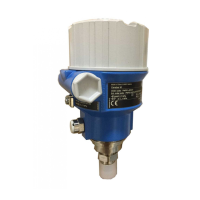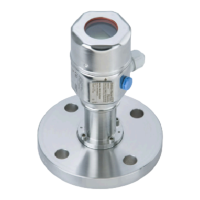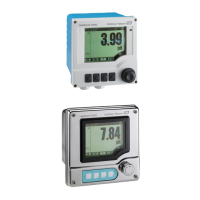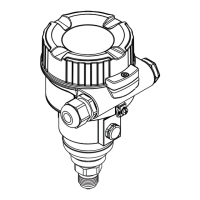Gammapilot M FMG60 with FOUNDATION Fieldbus Commissioning
Endress+Hauser 79
Multiple-point calibration is especially advisable for measurement in a wide range of densities or for
especially precise measurements.
Recalibration
The Gammapilot M provides a further calibration point ("10") for recalibration. This point can be
entered, if the measuring conditions have changed, e.g. by deposit in the measuring tube.
After entering of the recalibration point, I
0
is recalculated according to the current measuring
conditions. The absorption coefficient μ is kept unchanged from the original calibration.
Methods for entering the calibration points
Automatic calibration
For an automatic calibration, the desired calibration point is realized at the measuring tube, i.e. the
measuring tube is filled with a medium of the desired density. For the background calibration the
radiation remains switched off, for the other calibration points the radiation is switched on.
The Gammapilot M automatically records the pulse rate. The associated density is determined in
the laboratory and entered by the user.
Manual calibration
In order to achieve a high measuring accuracy, it is advisable to determine the pulse rates for a
couple of samples of the same density and to calculate the average density and average pulse rate
for these samples. These values can then be entered manually into the Gammapilot M.
If possible, this procedure should be repeated at a further density. The both density values should
be as far from each other as possible.
!
Note!
When calibrating manually, the calibration date is not set automatically. Instead, it must be entered
manually into the "calibration date" (*C7) function.

